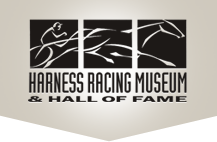
charles e. "chuck" coon
Charles E. “Chuck” Coon was harness racing’s premier innovator in racetrack design, construction and maintenance, and his ideas led to the design and construction of racetracks that have been considered state-of-the-art in both safety and speed.
Born on May 15, 1928, in Detroit, Michigan, Chuck was the son of the late Charles J. Coon, a skilled trackman in his own right. After a two-year stint in the U.S. Army, Chuck married, started a family, and began working in racetrack maintenance. He and his father were the first to put down sand on a clay racetrack, thus enabling horses to race rain or shine.
Coon was working at a track in Jackson, Michigan, when Pat Provenzano, the president of Batavia Downs, hired him to be the track superintendent. Coon’s expertise resulted in horses regularly going two-minute miles on the weekends, a display of speed previously unseen at Batavia. After his success in Batavia, Coon became the track superintendent at Buffalo Raceway. During this time, he obtained a starter’s license and became the starting judge at the western New York tracks. Eventually he was appointed the starter at Yonkers Raceway.
After the death of his father in 1970, Coon returned to Detroit as the starting judge at Wolverine and Hazel Park. During this period, he began to question the USTA’s protocol that called for track turns to be elevated one-inch for every foot out from the rail. Stan Bergstein introduced Coon to a Swedish professor of engineering, Dr. Ingmar Frederickson. Dr. Frederickson had performed scientific studies on the detrimental effect on horses traveling over a poorly elevated racetrack. Coon agreed with Frederickson that improper racetrack design placed undue stress on horses.
Coon soon had the opportunity to put these new ideas into practice at Buffalo Raceway. He banked the turns 12% which resulted in record-breaking performances. Next he went to Windsor Raceway, removed the synthetic tartan track (which was believed to cause lameness), and elevated the turns to 16%. Direct Scooter then went a mile in 1:54.2 at Windsor, a world race-record for four-year-old pacers on a five-eighths-mile track.
In 1975, for the very first time, the Hambletonian was to be telecast live from DuQuoin on network television. Coon was retained by Fred Van Lennep and Bill Hayes to ensure that the race went off on time regardless of weather. Eventually the success at DuQuoin prompted Col. H. Willis Nichols, George Alexander, P. J. Baugh and eventually Tom Crouch to join Van Lennep and Hayes in retaining Coon to look after the clay racetracks, not only at DuQuoin but also in Springfield, Indianapolis and The Red Mile.
Coon was always quick to embrace changes he thought would help racing. After visiting Dr. Frederickson in Europe and witnessing racing without an inside hub rail, he began to promote the removal of rails in North America. As a starting judge, he experienced the challenge of providing a consistent speed to the drivers trying to get their horses away on gait. This led to the development of a computerized speed control.
Chuck’s sons, Greg and Dan, joined their father in business and have continued his work. Over the years, they have handled the construction or reconstruction of dozens of tracks in the United States, Canada and locations all over the world. Chuck’s brother, Jerry, also served an apprenticeship in Michigan and traveled all over North America during his career in track maintenance.
Chuck Coon retired in the late 1990s. He passed away on January 30, 2015.

